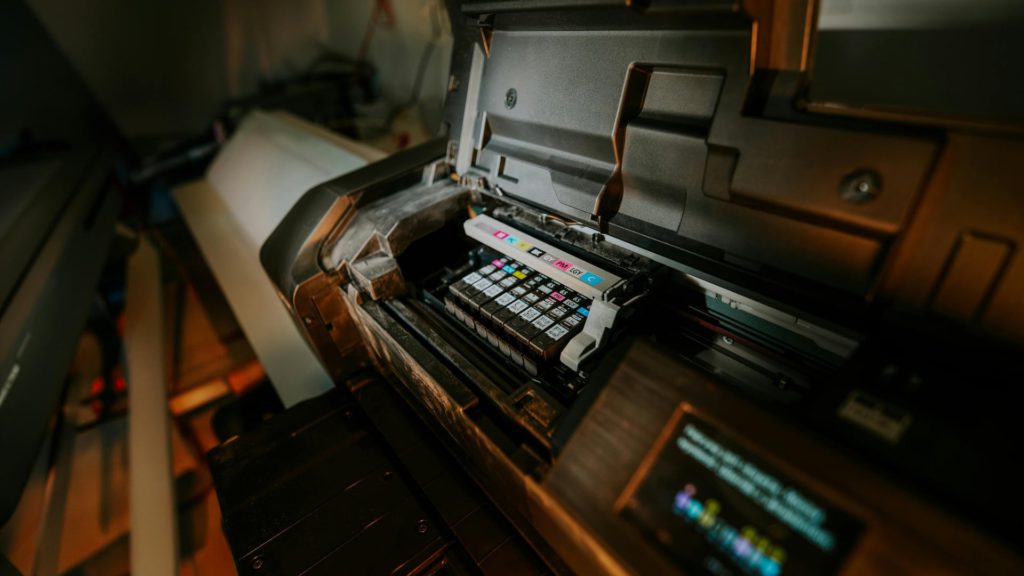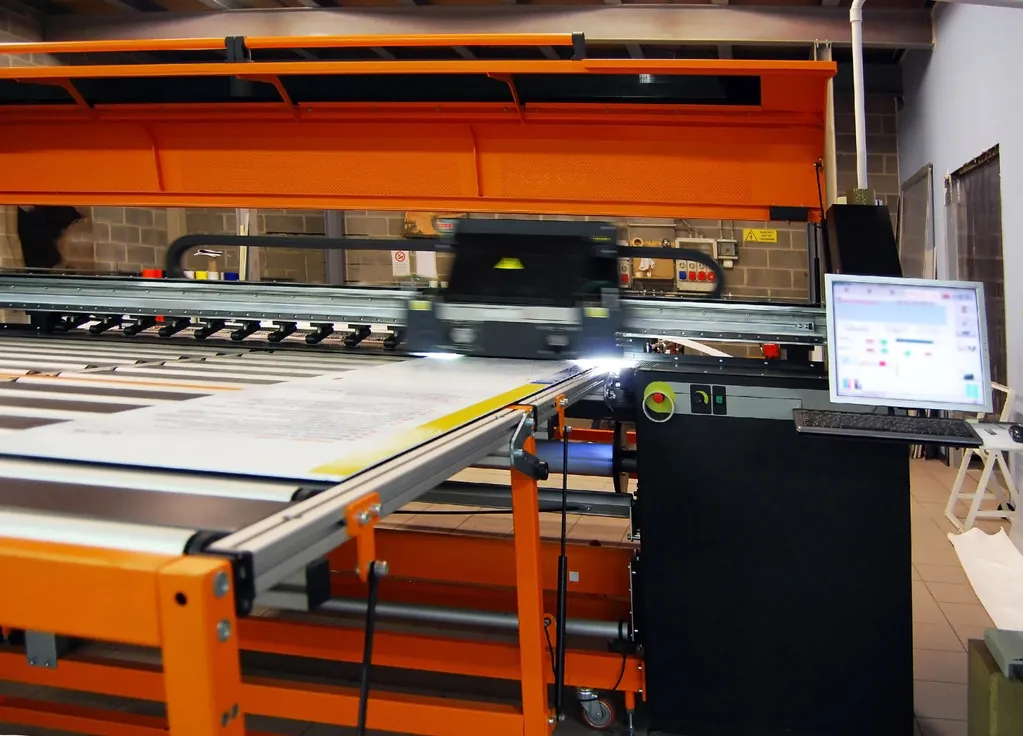
5 Common Large-Format Printing Issues & How to Troubleshoot Them
When producing posters, architectural drawings, signage, vehicle wraps, and promotional materials, large-format printing is essential to achieve the best results. However, if a large format printer starts acting up, even minor issues can cause serious production delays, material wastage, or client dissatisfaction.
Knowing how to troubleshoot common large-format printer problems can save you time, money, and stress. So, here’s a breakdown of these issues—and how to fix them effectively.
1. Banding or Horizontal Lines in Prints
Does your final print have visible stripes or bands, especially across large areas in colour? This is one of the more prevalent quality problems in wide-format printer output. Depending on printheads, it could be a misalignment, or a blocked or clogged nozzle, or the print heads are moving too fast for the chosen resolution causing excess stress on the system. Furthermore, lower-quality media or incompatible media could be the reason that leads to the same issue.
Here’s how to fix it:
- Run a nozzle check test via your printer’s control panel or RIP software.
- Clean the printhead properly and thoroughly. Follow the instructions, depending on your printer model.
- Adjust print speed and resolution to suit your requirements and large-format printer limit.
- Use media specifically rated for your large format printer.
- Refill or replace ink cartridges to avoid uneven ink flow.
- If the issue persists, professional large-format printer repairs may be required.
2. Poor Colour Accuracy or Dull Output
When your large-format printer output appears faded, off-colour, or doesn’t match what’s on screen, especially for high-detail designs or photography, you should suspect these reasons:
- Incorrect or missing ICC colour profiles
- The printer is not calibrated for current media
- Expired or low-quality ink
- Monitor not calibrated
Here’s how to fix it:
- Install and apply the correct ICC profile for your specific printer, ink, and media.
- Regularly calibrate your printer—most wide-format printers offer built-in calibration tools.
- Use genuine inks and check expiry dates—faded ink can affect tone and contrast.
- Calibrate your monitor using a colourimeter if colour matching is essential.
- Schedule wide-format printer maintenance to address recurring colour issues.

3. Media Feed Errors or Skewing
Misfed media, print shifts, and media jams can impact print alignment, and possible scenario include that a print or printer component may be damaged. This could come from an improperly loaded media, improper roll tension, and dirty or damaged feed rollers. It could simply be the settings on the RIP or printer driver are incorrect for the media. If your media has curled edges or varies in thickness, that will also lead to skewed prints.
Here is a quick way to troubleshoot this before you call a professional:
- Ensure the media is loaded squarely and tightly against guides.
- Clean the feed rollers using a lint-free cloth and isopropyl alcohol.
- Use media that’s been stored flat in a climate-controlled space.
- Double-check media settings and page size before starting the print.
- If issues continue, consider calling the pros to check roller wear.
4. Ink Smudging, Pooling or Delayed Drying
Does the ink seem wet, smear when touched, or pool in heavy coverage areas? This is common with glossy paper or vinyl. As an example, printing on the wrong side of coated media, incorrect ink limits/print profile, and even high humidity or low room airflow could cause these issues without you knowing in time. There are a few things you could try to fix this and make sure the issue does not come back. Print on the coated/printable side (look for watermarks or try a drop of water) and lower your ink saturation or total ink limits in your RIP. If your ink is still persisting to smear/smudge after these fixes, consider having a professional check the build of your machine.
5. Connectivity or Software Glitches
Your printer job fails to send, the printer freezes, or the output size doesn’t match your file setup—these are often the most frustrating but easily fixable problems. The culprit could be outdated printer drivers or firmware or conflicts between RIP software and design programmes. Another less common cause could be wrong page dimensions or orientation, or your network connection drops (especially for wireless large-format printers) when you’re printing.
Here are some simple tips to troubleshoot it:
- Update your printer driver and firmware from the manufacturer’s website.
- Check that your RIP software is up-to-date and compatible with your OS
- Ensure artwork page size and printer settings match exactly.
- Use wired connections to avoid network dropouts.
Call Us for Professional Help
When it comes to big-format printing, the smallest hiccup can lead to big delays. Understanding how to prevent and troubleshoot common issues—whether they relate to feed errors, colour shifts, or software bugs—keeps your workflow uninterrupted.
So, if you’ve tried all the methods but your large-format printer doesn’t seem to work back smoothly, don’t stress yourself out; just simply contact our large-format printer specialists at Printer Repair Centre to help you out. We also offer preventive maintenance that pays off in fewer reprints, better quality, and less downtime.
Contact us today for a same-day repair or to schedule a service.




